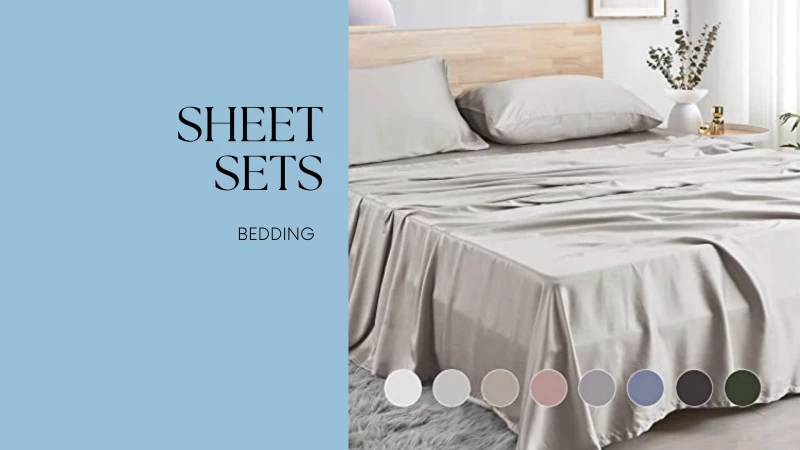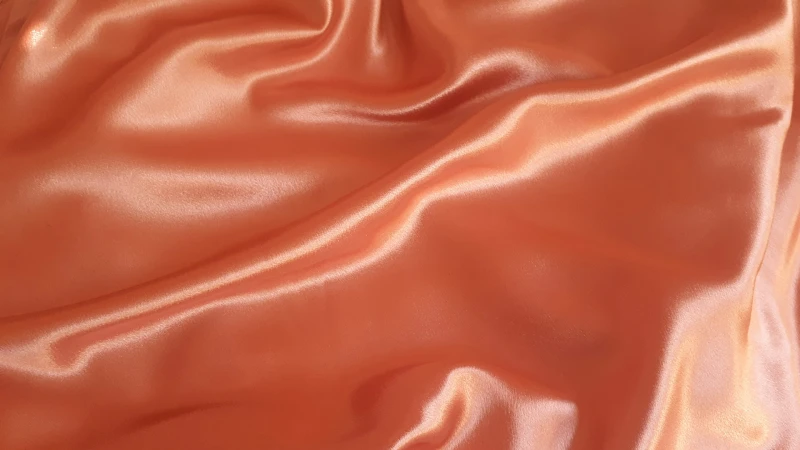Disclosure: This post may contain affiliate links, meaning we get a commission if you decide to make a purchase through our links, at no cost to you. Please read our disclosure for more info.
Quality sleep is essential for both mental and physical well-being. Yet, it often eludes us due to a variety of reasons. One underrated factor? Your bedding. This guide aims to solve that puzzle by helping you pair the perfect sheets with your mattress. We’ll explore mattress types, thread count, material, and much more to set you on the path to dreamland.
In This Post:
1. Understanding Mattress Types
Choosing the right sheets starts with understanding your mattress. There are various types, such as foam, innerspring, latex, and hybrid. Foam mattresses offer plush comfort but can trap heat. In contrast, innerspring provides a cooler but firmer sleep. Latex offers durability and natural cooling, while hybrids combine the best of both worlds. Each mattress type calls for different sheet characteristics. For example, foam pairs well with breathable fabrics.
When it comes to innerspring, you might want sturdy, crisp sheets. Even when searching for affordable mattresses, knowing the type can guide your sheet choices and elevate your sleep experience.
2. The Role Of Thread Count
Thread count measures the threads in a single square inch of fabric. Many people mistakenly believe that a higher thread count automatically equals superior quality. Yet, this count is just one factor in determining the quality of sheets.
For foam mattresses, a moderate thread count of around 200-300 offers breathability. Innerspring and hybrid mattresses pair well with sheets that have a thread count between 400-500, providing durability and comfort. Latex mattresses are versatile and can work well with a variety of thread counts. Choose wisely to ensure your sheets complement your mattress type.
3. Material Matters
Sheet material can make or break your sleep quality. Popular options include cotton, known for its breathability and softness. Linen excels in heat regulation, making it great for summer. Microfiber offers durability and a silky touch. For foam mattresses, cotton or linen works well due to their cooling properties.
Innerspring mattresses are less picky; however, microfiber adds a touch of luxury. Latex mattresses are flexible, but a breathable material like cotton complements its natural features. Each material has its unique benefits, so choose one that aligns with your mattress type for an optimal sleep experience.

4. Seasonal Considerations
Seasonal changes can impact your sleep quality. In hot weather, breathable fabrics like linen keep you cool, while cotton flannel offers warmth in winter. To transition between seasons quickly, consider having two sets of sheets on hand. In the summertime, opt for lightweight, moisture-wicking materials. When it gets colder, switch to heavier, insulating fabrics.
Adapting your bedding to the climate can make a significant difference in comfort, contributing to a more restful slumber. By keeping a seasonal rotation, you ensure that your bedding suits the temperature and your comfort needs.
5. The Fit Factor
Proper fit is crucial for both comfort and aesthetics. Sheets that are too small will slip off, while oversized ones bunch up uncomfortably. Elastic corners help sheets stay in place but might lack the traditional, crisp feel that non-elastic options offer.
Mattress depth also plays a role. A deep-pocket sheet is necessary for thicker mattresses, while standard sheets suit thinner options. Ensure that the sheet dimensions match your mattress for a snug and cozy night’s sleep. Getting the fit right is just as important as choosing the material or thread count.
6. Care And Maintenance
Taking care of your sheets extends their lifespan and keeps them feeling fresh. For cotton sheets, a cold wash is gentle and energy-efficient. Linen loves a lukewarm wash, while microfiber is best cleaned in cool water. Remember, always check care labels for specific guidance.
As for longevity, sheets typically last around 2-3 years. However, if you notice signs of wear, like thinning or fading, it’s time for a replacement. Proper care not only maintains comfort but also makes your bedtime ritual more inviting. Isn’t that what we all want at the end of the day?
7. Color And Aesthetics
Colors influence your mood and can either calm or energize you. Soothing shades like blues and greens can help you unwind, while vibrant hues like red may keep you alert. When it comes to matching with room decor, stick to a similar color palette for a harmonious feel.
As for patterns versus solids, it depends on your taste. Solid colors offer a clean, streamlined look, while patterns add visual interest. For a balanced aesthetic, consider mixing a patterned sheet with solid pillowcases. Making thoughtful choices in color and design elevates your sleep sanctuary.
8. Budget And Quality
Balancing quality and budget is often a juggling act. While it’s tempting to go for cheaper options, remember that you spend a third of your life in bed. Investing in quality sheets pays off in the long run. High-quality cotton or linen often endures and even gets softer with time.
On the flip side, you can save on seasonal sheets that won’t be in constant use. To snag good deals, keep an eye on seasonal sales or consider buying sheet sets, which are often priced more reasonably than individual items. Make wise choices, and your wallet—and your sleep—will thank you.
In Summary
The right sheets can elevate your sleep experience. From understanding mattress types to considering seasonal changes, each choice contributes to your comfort. Investing in quality bedding isn’t just a luxury; it’s a pathway to better sleep and, by extension, a better you. Take the insights from this guide and turn your bed into the cozy haven you’ve always wanted. Sweet dreams!




